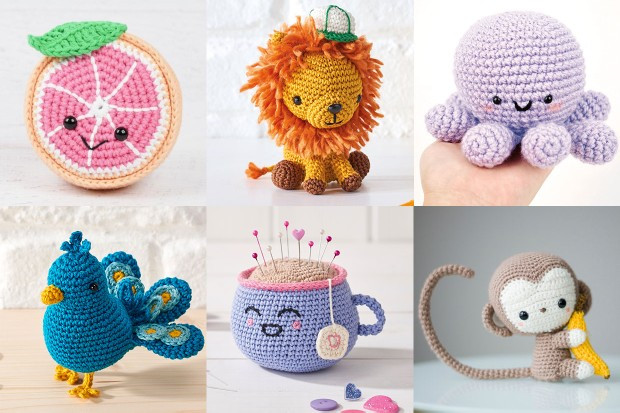History of Amigurumi
Hello, ladies!
As you liked my yesterday post about crochet history, I decided to make a seria of such informative posts.
Today, I'd tell you about amigurumi history.
What Is Amigurumi?
Amigurumi (あみぐるみ) is just one of the many ways of knitting or crocheting crafts and toys. The word is the blend of the words 'ami' (あみ) and 'nuigurumi' (ぬいぐるみ), and it means crocheted or knitted stuffed toy.
These toys are easy and swift to make because of their small size. To create them, it’s usually favoured to crochet rather than knit, and instead of the usual row-by-row Western method, the thread is usually worked in rounds. This method simplifies the creation process.
What Is the History of Amigurumi?
Some historians think that the origin of this art can be found in China, where there are records of crocheted and knitted dolls from the Shang dynasty. The craft started to take hold in Japan with the interaction between China and Japan during the Edo period, at the start of the 17th century.
Until the late 19th century, amigurumi continued to spread widely due to the start of trading with the Dutch, who introduced knitting as a technique. Knitting also progressed thanks to the samurai, who began using this art to create decorations and garments for their katana, winter wear, gloves and even socks (tabi, たび).
During the Meiji period and until the beginning of World War I, with the start of the industrialisation of the country, education began to change. Thousands of students were studying abroad, and many foreign teachers were hired in Japan. During this time period, more women were pushed to learn Western-style needlework.
Amigurumi began to be more common in the late 1970s, when the kawaii (かわいい) culture emerged, thanks to characters like Hello Kitty. In the late ’80s, amigurumi’s art boomed thanks to an NHK show called Ami.
The craft became really popular in the rest of the world between 2003 and 2006, when you could start finding thousands of free online patterns and video tutorials to help you learn.

Even if you’re just a beginner, with so many patterns to choose from and so many tutorials to help you, you can still create amazing things. Amigurumi is perfect both for kids and adults. The only limitation is your imagination!
One of the first things to learn is how to do the ‘magic ring’. With this technique, you work in a circular pattern that allows you to adjust the diameter of the central ring so that it disappears. That’s the major difference between amigurumi and the usual crochet, which leaves the central circle visible.

Thank you most informative.
so how do I get the free to down load and print patterns on your web sight?
Would love to have access to your free patterns
All patterns at Craftorator are for free.
You can read this posts to see how to use Craftorator and find the patterns: https://www.craftorator.com/forum/62-how-to-use-cr...
https://www.craftorator.com/forum/63-how-to-find-p...